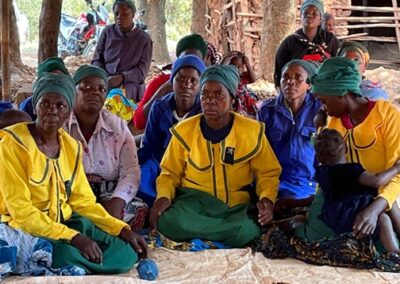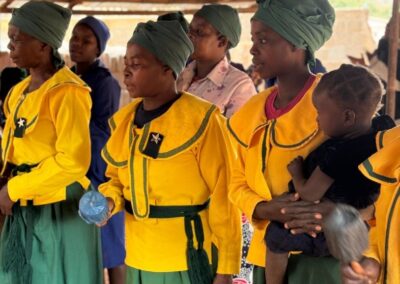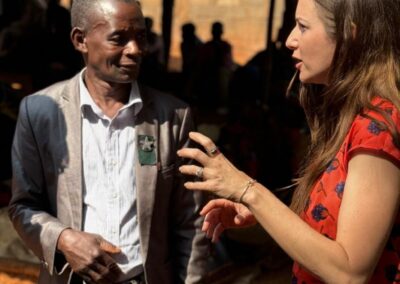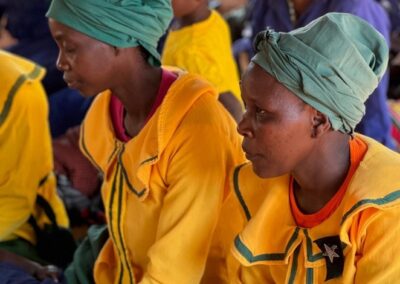Community Voices >> Voices of Gorongosa >> Community Stories >> Zion Christian Church
A Blending of Faith, Culture and Tradition
African Zionism is one of Southern Africa’s most widespread and distinctive religious movements—a powerful fusion of Protestant Christianity and traditional African spiritual practices.
Though its origins trace back to the United States, it was in Johannesburg at the turn of the 20th century that Zionist churches first took root. From there, the movement spread rapidly across Eswatini, Mozambique, Zimbabwe and beyond, adapting and thriving within diverse local cultures.
At the heart of the Zion Christian Church tradition are deeply spiritual, communal ceremonies rich with symbolism and movement. Worship often includes faith healing, speaking in tongues and ritual purification, particularly through baptism. These acts are not just spiritual gestures—they are deeply embodied experiences, performed in community and passed down through generations.
Color plays a meaningful role in these gatherings. Zionist churches are known for their vibrant uniforms, with green and yellow as the movement’s signature hues. But attire also reflects age, role and region: Young women often wear blue and older women dress in green and yellow, while men don khakis for dance and bright green suits for formal services. One unique feature? The men’s shoes are fitted with metal soles—designed to deliver thunderous, rhythmic stomps that anchor the songs and prayers with a driving beat.
This Zion Christian Church sits nestled in rural Gorongosa, under a simple but sacred structure: a hut-like canopy supported by wooden beams. During one unforgettable service, the collective energy of the congregation—especially the men’s powerful stomping—shook the very foundation. A support beam gave way, and a small part of the roof collapsed. But in true Zionist spirit, no one missed a beat. The congregation calmly lifted the beam, patched the roof and continued worshipping with joy and resilience.
There’s a warmth and intimacy to these gatherings. Children are never an afterthought—they are at the heart of the celebration. Toddlers stomp alongside the men; babies bounce on their mothers’ hips, wrapped in colorful cloth. It’s a worship style that blends the sacred and the everyday, where faith is not just believed, but felt—through rhythm, community and shared devotion.





